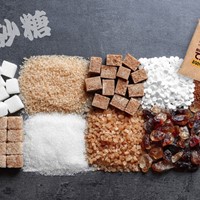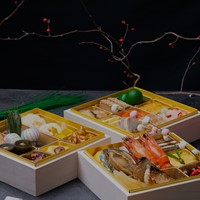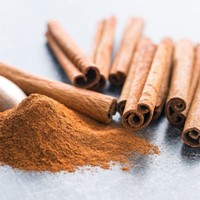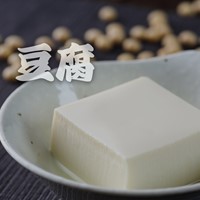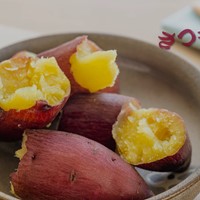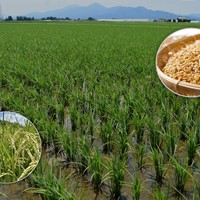Japanese Luxury Fruits: The Pursuit of Perfection

This page contains affiliate links.
The Japanese people are known as a nation that strives for perfection. From traditional crafts to top-notch electronics, Japan is home to some of the most innovative and high-quality products. It should come as no surprise that local farmers' creativity, perseverance, and unwavering dedication to mastering the art of fruit growing produces some of nature's most magnificent gifts, otherwise known as "luxury fruits."
Besides luxury fruits, Japan is also home to a variety of apples, mushrooms, etc.
What are so called "Luxury Fruits" in Japan?
Fruits in Japan can be roughly divided into two categories: those we buy at the local supermarket and eat as a source of vitamins and minerals, and those that can be considered works of art, known as "luxury fruits." While the fruits grown for mass consumption can be found on the shelves of supermarkets throughout Japan, “luxury fruits” are usually elegantly displayed in specialty stores. The amount of work put into growing these masterpieces as well as their flawless appearance and unrivaled taste results in a hefty price tag. Therefore, luxury fruits are not part of an everyday diet and are reserved for special occasions or purchased as a gift. Of course, nothing stops you from savoring the taste of one of these mouthwatering treats!
Famous Luxury Fruits in Japan
Luxury fruits are nothing short of perfection thanks to Japanese farmers' attention to even the smallest details and dedication to perfection of cultivating techniques. The flawlessness and beauty of these agricultural masterpieces, on the other hand, makes it hard to choose between equally perfect counterparts. For your convenience, we've compiled a list of some of Japan's most famous luxury fruits.
Square Watermelon

When it comes to the worldwide popularity, Japanese square watermelons are hard to beat. Many of us may think that fruits with such a unique shape must be a new sort of watermelons, but this is not the case. The square shape is achieved by placing a “normal” watermelon inside of a box at an early stage without pulling it out of the ground. Then, the fruit grows to take on the shape of a box. For those of you who are already craving for a piece of it, we have some bad news. The unique method of growing also results in a fact that square watermelons are harvested unripe, making them virtually inedible. However, it does not mean you should just skip it. This summer fruit is not only a popular choice for decorative purposes, but it is also a memorable gift.
Musk Melon

Melon is a very popular fruit in Japan, as evidenced by the widespread availability of melon-flavored soft drinks and desserts. Indeed, melon seems to be ubiquities in Japan, and the luxury fruit industry gladly embraces this fact by offering a great variety of it. Among many strong rivals, musk melon is arguably the most well-known and popular one. Whether you buy it as a gift or keep it for yourself, it's a luxury fruit that you can't go wrong with.
In order to produce this wonder of nature, a method that involves leaving only one fruit per plant is often employed. As a result, all the nutrients are concentrated in the chosen musk melon making it more delicious than ever.
Click the image(s) to see and purchase online.
Taiyo no Tamago

"Taiyo no Tamago," which translates to "the Egg of the Sun," is probably the most famous mango from Japan. Unlike typical mangoes, which are picked once they reach the necessary level of maturity, "Taiyo no Tamago" is harvested using a unique and subtle method. It is carefully nurtured until it naturally falls from the tree. But don’t worry! A net is attached to the tree to catch the mango, preventing it from falling to the ground. This fully ripe fruit has a sugar content of over 15%, making it wonderfully sweet.
This premium, fully ripened mango comes from Miyazaki Prefecture. To be certified as "Taiyo no Tamago," a mango must meet specific criteria: a sugar content above 15%, a weight of at least 350g, and a reddish appearance. As a result, "Taiyo no Tamago" is a rare and highly selective mango among other fully ripened varieties. It is of the Irwin variety, also grown in places like Kagoshima and Okinawa. However, only those grown in Miyazaki and meeting several strict conditions can be called "Taiyo no Tamago."
Additionally, only about 15% of fully ripened mangoes from Miyazaki are certified as "Taiyo no Tamago," and the 5L size is even rarer, accounting for less than 1%.
This version keeps the original charm and highlights the uniqueness and exceptional standards of "Taiyo no Tamago."
Click the image(s) to see and purchase online.
Ruby Roman

Widely regarded as the most expensive grape in the world, “Ruby Roman” is one of the most precious sorts of grape cultivated in Japan. It is known for its large size and praised for its refreshing sweetness.
While there is an abundance of delicious grapes in Japan, “Ruby Roman” is definitely the sort of grape to consider whether you would like to enjoy it by yourself, share it with loved ones, or buy as a unique gift. “Ruby Roman” comes in two varieties you can choose from. One has seeds, while the other one is a seedless version that is easier to eat.
Ruby Roman grapes are primarily grown in Ishikawa Prefecture, and those labeled as "Ishikawa-grown" are considered to have the highest quality.
Click the image to see detail or purchase them.
Hatsukoi no Kaori

The name “Hatsukoi no Kaori” can be translated as “the Sent of First Love”, and it is the first ever cultivated sort of white strawberries in the world. Not only its historical significance, but also a delicate taste makes it an ideal gift to give, or a fantastic treat to enjoy by yourself. “Hatsukoi no Kaori” may appear unripe to those of us who are used to eating red strawberries. But don't be fooled by the fruit's pale appearance; it's perfectly ripe and delicious! White strawberries simply contain a small amount of anthocyanin, the pigment responsible for the red color in strawberries.
Because there are so many different sorts of luxury fruits, it would be impossible to cover them all in one article. If you live in Tokyo or are planning a trip to this exciting city, visiting one of the specialty stores is highly recommended, not only as the best way to learn more about luxury fruits in general, but also as a delicious way to immerse yourself in Japanese culture. In this article, you can learn about some of the best fruit parlors and stores in Tokyo where you can purchase luxury fruits or enjoy delicious products made with them. Besides fruits, there are also many great Japanese gift ideas you can read about in our article: "30 Best Japanese Gift Ideas for Any Occasions".
If you are looking for international supermarkets in Tokyo, check out our list of import stores.





